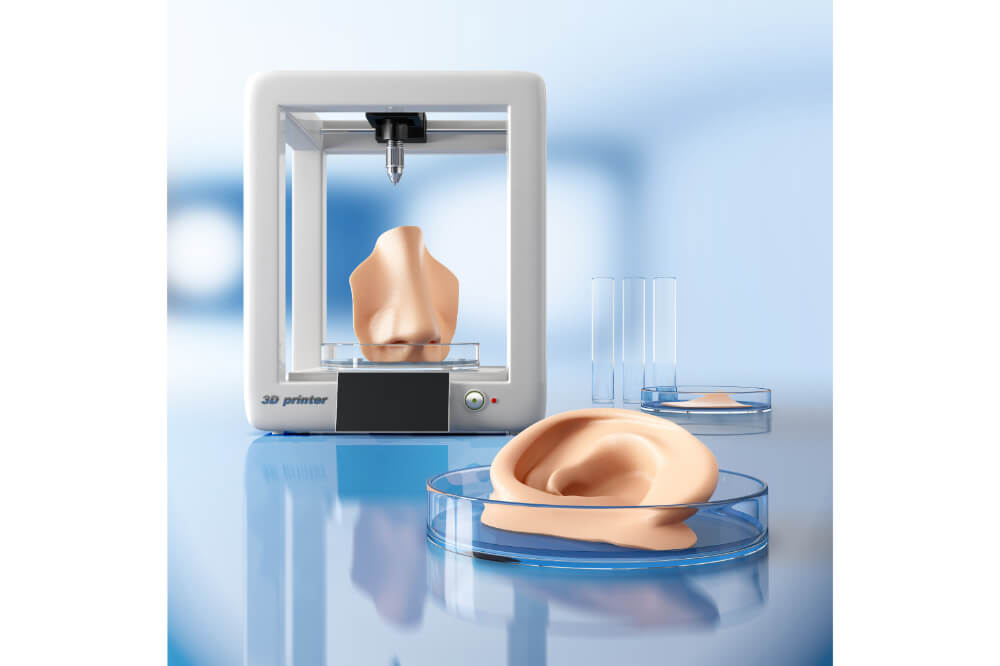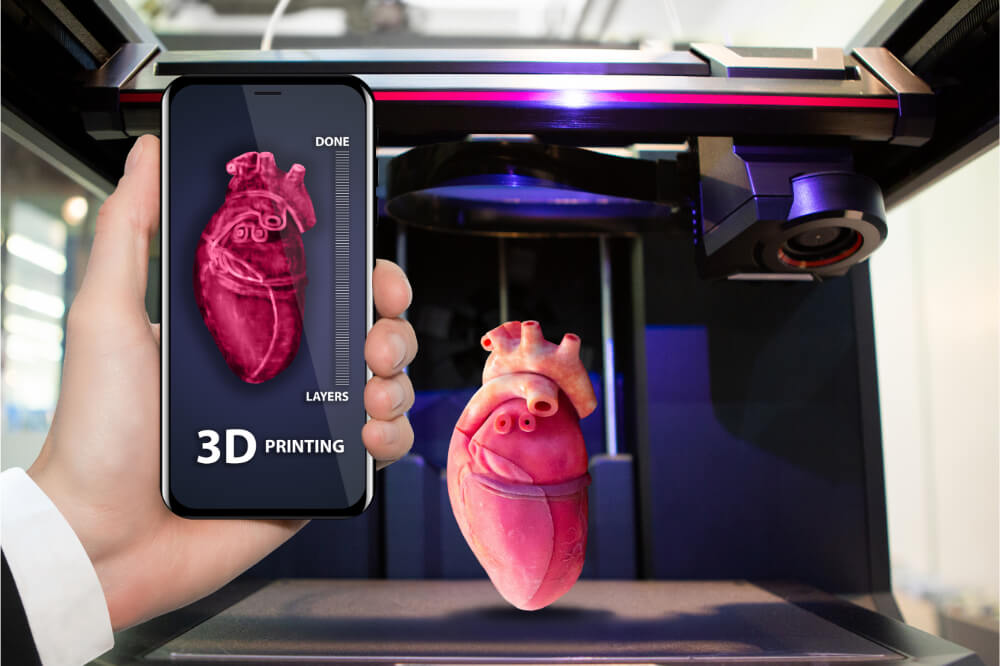It is a tricky issue…
3D printers come with many benefits and lots of potential. One of those potentials is to help doctors and hospitals provide better healthcare. That is done through the printing of different human tissues.
Some people have claimed that 3D printers can make actual human organs and this may be so for ears, implants and similar body parts but it is not true for them all. Besides being a tricky issue to walk, it is also tricky to make human organs.
To find out more on this issue, just continue to read our article. It provides the information you need to know about so you can make intelligent decisions on this tough subject matter.
The purpose behind this research
Almost every invention known to mankind has had some really altruistic motivation spurring on the research and the design of the new object. The same attitude is present in 3D medical printing research.
Researchers are trying to find a way to help many people, especially those on organ donor lists, get new organs and continue life as normal. The statistics are there to support this attitude:
- 20 people die each day waiting for an organ
- 30,000 transplants are performed each year
- There are at least 113,000 people on different organ wait lists
- Research is still going on to alleviate this problem

The problem hindering biomedical printing of organs
If humans were made of plastic and metal, then 3D printing could solve a myriad of health and medical issues. But humans are made up of living cells and tissues and those items are not easily replicated.
There are different aspects of printing human organs that slow everything down:
- Human organs need special filament made from actual human cells and is often called bio-ink but it does not always work
- Organs created have a short shelf life and die if stored improperly or for too long a time period
- 3D printed human organs lack the cellular density as well as organ level function to be used in organ repair or replacement
- Two to three layers of organ material can cause the lower level cells to suffocate
- The complexity of construction hinders success- just because researchers can make cells fuse together doesn’t mean they will work or be adopted by the body it is transplanted into
- More research is needed and a $1 million prize has been offered for the first live organ to be printed
What organs can be made by 3D printing?
As it stands between the years 2013 and 2020, there has been a lot of progress in printing out human organs. But even though a lot of research has been conducted whole, live organs like a functioning heart, and other vital organs cannot be achieved.
But there has been some success which inspires and motivates researchers to continue trying. Here are some successful organs that have been printed so far:
- Liver strips but not the whole liver- these are dime sized strips that live for about 40 days only but it takes only 45 minutes to print and 2 days for the cells to reach maturity
- Trachea- this has successfully been printed and transplanted into a little girl. It was created to dissolve as the girl grew older and her original trachea repaired itself
- Skin cells- these are usually made of single cells and are the easiest to make along with other single cell body parts
- Human ear- this has been successfully done and the printed ear works like the real thing
- Blood cells- a little more complicated and an area filled with challenges as this requires two cells to create
- Bladders- these have been successfully transplanted
- Cornea- this new organ development should help people to see better
- Bones- already made and successfully used
The organs that are in development right now
The lack of success in building key body organs for humans has not deterred the researchers from continuing to try. They are working on other vital organs to help sick patients survive their ailments and function normally again. Here are those in progress organs:
- Heart
- Ovaries
- Muscles
- Kidneys
- Lungs
- Liver
- Esophagus
- Lungs
Then those that are a long ways off in the future include:
- The brain
- Intestines
- Stomach
A new technique and a new strategy
There is a research project called SWIFT or sacrificial writing into functional tissue, that seeks to speed up the process of growing the right healthy cells and get them ready for printing.
This technique seeks to solve the cellular density and the organ level function problem that has so far stopped researchers from printing new vital organs. This technique hopes to build “3D printed vascular channels into living organs composed of stem cell derived organ building blocks that yield viable organ specific tissue with high cell density and function.”
The new strategy is to avoid building new organs and printing only those cells that are necessary to support already living tissue in the body. This operation is hoped to see the building blocks repair and replace damaged human organs.
Its two step process has seen some success and it may be the way for medical 3D printers to go in the future since printing whole organs is still not an option.
Some final words
While 3D printers can be used in the medical field and they are reshaping the industry. There is still a long difficult path to print organs that work. Not only does the complexity of those organs present a major hurdle, getting them to function is also a difficulty that is not easy to overcome.
But there is some good news. The organs that can be built by 3D printers are great for medical research when vaccines are needed and other medical research when they work.
Printing human organs is not putting medical research on the level of Dr. Frankenstein. Instead it is trying to find solutions to human medical issues to help patients live a little longer. This aspect of 3D medical printing is a long road to travel.

